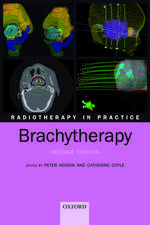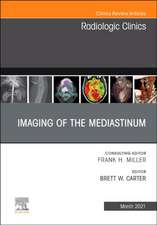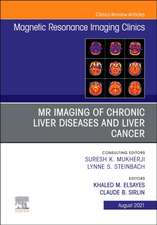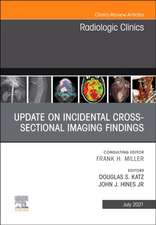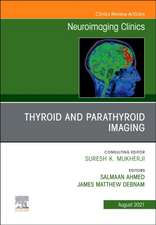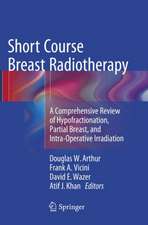Linear Accelerators for Radiation Therapy: Series in Medical Physics and Biomedical Engineering
Autor David Greene, P.C Williamsen Limba Engleză Paperback – 1997
| Toate formatele și edițiile | Preț | Express |
|---|---|---|
| Paperback (1) | 779.33 lei 6-8 săpt. | |
| CRC Press – 1997 | 779.33 lei 6-8 săpt. | |
| Hardback (1) | 1042.56 lei 6-8 săpt. | |
| CRC Press – 2 aug 2017 | 1042.56 lei 6-8 săpt. |
Din seria Series in Medical Physics and Biomedical Engineering
-
 Preț: 362.41 lei
Preț: 362.41 lei - 5%
 Preț: 1304.44 lei
Preț: 1304.44 lei -
 Preț: 339.85 lei
Preț: 339.85 lei - 9%
 Preț: 618.43 lei
Preț: 618.43 lei -
 Preț: 369.24 lei
Preț: 369.24 lei -
 Preț: 366.36 lei
Preț: 366.36 lei -
 Preț: 359.98 lei
Preț: 359.98 lei - 5%
 Preț: 339.68 lei
Preț: 339.68 lei - 15%
 Preț: 668.79 lei
Preț: 668.79 lei -
 Preț: 356.63 lei
Preț: 356.63 lei -
 Preț: 373.96 lei
Preț: 373.96 lei - 5%
 Preț: 347.04 lei
Preț: 347.04 lei -
 Preț: 364.61 lei
Preț: 364.61 lei -
 Preț: 301.35 lei
Preț: 301.35 lei - 46%
 Preț: 352.95 lei
Preț: 352.95 lei - 22%
 Preț: 371.45 lei
Preț: 371.45 lei - 25%
 Preț: 1057.26 lei
Preț: 1057.26 lei - 5%
 Preț: 542.81 lei
Preț: 542.81 lei - 26%
 Preț: 1098.62 lei
Preț: 1098.62 lei - 49%
 Preț: 680.73 lei
Preț: 680.73 lei - 18%
 Preț: 1056.51 lei
Preț: 1056.51 lei - 22%
 Preț: 325.85 lei
Preț: 325.85 lei - 21%
 Preț: 380.81 lei
Preț: 380.81 lei - 26%
 Preț: 848.15 lei
Preț: 848.15 lei - 15%
 Preț: 485.67 lei
Preț: 485.67 lei - 18%
 Preț: 1060.28 lei
Preț: 1060.28 lei - 25%
 Preț: 603.31 lei
Preț: 603.31 lei - 26%
 Preț: 1042.56 lei
Preț: 1042.56 lei - 25%
 Preț: 851.88 lei
Preț: 851.88 lei - 5%
 Preț: 903.46 lei
Preț: 903.46 lei - 15%
 Preț: 457.65 lei
Preț: 457.65 lei - 5%
 Preț: 907.98 lei
Preț: 907.98 lei - 5%
 Preț: 1030.71 lei
Preț: 1030.71 lei - 5%
 Preț: 908.53 lei
Preț: 908.53 lei - 18%
 Preț: 1427.65 lei
Preț: 1427.65 lei - 26%
 Preț: 1047.06 lei
Preț: 1047.06 lei - 14%
 Preț: 312.45 lei
Preț: 312.45 lei - 5%
 Preț: 742.34 lei
Preț: 742.34 lei - 25%
 Preț: 1229.47 lei
Preț: 1229.47 lei - 18%
 Preț: 1051.64 lei
Preț: 1051.64 lei - 15%
 Preț: 677.81 lei
Preț: 677.81 lei - 25%
 Preț: 1195.93 lei
Preț: 1195.93 lei
Preț: 779.33 lei
Preț vechi: 950.41 lei
-18% Nou
Puncte Express: 1169
Preț estimativ în valută:
149.25€ • 152.30$ • 125.57£
149.25€ • 152.30$ • 125.57£
Carte tipărită la comandă
Livrare economică 26 februarie-12 martie
Preluare comenzi: 021 569.72.76
Specificații
ISBN-13: 9780750304764
ISBN-10: 0750304766
Pagini: 286
Ilustrații: 1, black & white illustrations
Dimensiuni: 156 x 234 x 15 mm
Greutate: 0.53 kg
Ediția:Revised
Editura: CRC Press
Colecția CRC Press
Seria Series in Medical Physics and Biomedical Engineering
Locul publicării:Boca Raton, United States
ISBN-10: 0750304766
Pagini: 286
Ilustrații: 1, black & white illustrations
Dimensiuni: 156 x 234 x 15 mm
Greutate: 0.53 kg
Ediția:Revised
Editura: CRC Press
Colecția CRC Press
Seria Series in Medical Physics and Biomedical Engineering
Locul publicării:Boca Raton, United States
Public țintă
ProfessionalCuprins
General description of a linear accelerator and its component systems. Basic processes in electron acceleration - the accelerating waveguide. The microwave system and its high voltage supplies. The vacuum, cooling and ancillary systems. The electron beam (its production and transport). The treatment head. The dose monitoring and control system. Beam direction and beam shaping devices. Mechanical systems. Control and interlock systems. Treatment verification. Specification, performance and calibration. Radiation protection and room design. Accelerator operation. Simulators and tomographic scanners. Contemporary developments.
Recenzii
"… a very welcome second edition … thoroughly up to date with sections on MLCs, EPIDs, computer control of LINACs, dosimetry protocols, imaging, and costs … intensely practical and useful volume …"
-Professor S. Webb, Institute of Cancer Research and Royal Marsden NHS Trust
"… excellent … clearly written for medical physicists in the field."
-Professor S. Lillicrap, Head of Medical Physics, Wessex Regional Medical Physics Service
"… notable improvements include … technology of state-of-the-art radiotherapy techniques, more in-depth treatment of specialist topics such as waveguide theory and electron beam optics … marked increase in the number and quality of diagrams."
-J.B. Tuohy, Head of Radiotherapy Technology, Cookridge Hospital
"… a useful book for the indicated readership…"
-A.N.L. Kay, Director, Varian Oncology Systems
"… a reasonably sized and priced textbook that should be on every therapy department bookshelf and in every medical and radiography school. Radiographers, radiotherapists, medical technical officers, manufacturers, and clinical scientists would all benefit from this book."
-P.H. Smithson, Principal Physicist, Medical Equipment Management Organisation, Bristol Oncology Centre, RAD Magazine, April 1998
-Professor S. Webb, Institute of Cancer Research and Royal Marsden NHS Trust
"… excellent … clearly written for medical physicists in the field."
-Professor S. Lillicrap, Head of Medical Physics, Wessex Regional Medical Physics Service
"… notable improvements include … technology of state-of-the-art radiotherapy techniques, more in-depth treatment of specialist topics such as waveguide theory and electron beam optics … marked increase in the number and quality of diagrams."
-J.B. Tuohy, Head of Radiotherapy Technology, Cookridge Hospital
"… a useful book for the indicated readership…"
-A.N.L. Kay, Director, Varian Oncology Systems
"… a reasonably sized and priced textbook that should be on every therapy department bookshelf and in every medical and radiography school. Radiographers, radiotherapists, medical technical officers, manufacturers, and clinical scientists would all benefit from this book."
-P.H. Smithson, Principal Physicist, Medical Equipment Management Organisation, Bristol Oncology Centre, RAD Magazine, April 1998
Descriere
Linear Accelerators for Radiation Therapy, Second Edition focuses on the fundamentals of accelerator systems, explaining the underlying physics and the different features of these systems. This edition includes expanded sections on the treatment head, on x-ray production via multileaf and dynamic collimation for the production of wedged and other intensity modulated beams, on electron scattering systems, and on dosimetry. It contains a detailed description of electron beam optics and linear accelerator components. The final chapter explains how to use other equipment, such as scanners and simulators, in conjunction with linear accelerators for optimum treatment of cancers.


